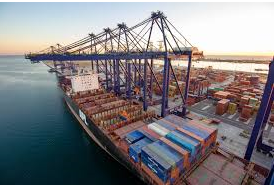INP-WealthPk
Abdul Ghani
Pakistan’s external account continued to face pressure during the first two months of FY2026, with rising imports widening the trade deficit despite a notable recovery in exports, according to the Monthly Economic Update & Outlook – September 2025 released by the Finance Division.

According to the report, goods exports rose by 10.2 percent year-on-year, reaching $5.3 billion during July–August FY2026, compared to $4.8 billion in the same period last year. The recovery was largely driven by the textile sector, with knitwear exports rising by 16.9 percent, bedwear by 12 percent, and garments by 10.6 percent. Service exports also recorded growth, rising 11.5 percent to $1.4 billion during the period.
However, the import bill continued to grow, rising 8.8 percent to $10.4 billion compared to $9.6 billion last year. The surge was driven primarily by higher imports of petroleum products, which rose 17.8 percent, and palm oil, which increased by 29.1 percent. The increase in palm oil imports reflects Pakistan’s heavy reliance on edible oil, a structural vulnerability that continues to burden the external account. Imports of petroleum crude, however, declined by 6.1 percent, partly offsetting the rise.
As a result of these opposing trends, Pakistan’s trade deficit widened to $5.1 billion during July–August FY2026, compared to $4.8 billion in the same period of FY2025. The services trade deficit also expanded, reaching $708 million compared to $604 million last year, as service imports rose 13.4 percent to $2.1 billion.
The report further noted that IT exports showed encouraging growth, rising 18.3 percent to $691.7 million in July–August FY2026. This underlines the growing contribution of the digital economy to Pakistan’s external receipts.
The Finance Division acknowledged that while exports are showing signs of recovery and remittances remain supportive, the overall external account is still under pressure due to rising import demand, particularly in energy and food commodities. The current account deficit stood at $624 million in July–August FY2026, up from $430 million last year.
With global commodity prices easing slightly, policymakers are hopeful that the import bill could stabilize in the months ahead. Nonetheless, heavy dependence on imported fuel and edible oils continues to expose Pakistan to international price shocks and currency pressures.
Credit: INP-WealthPk













